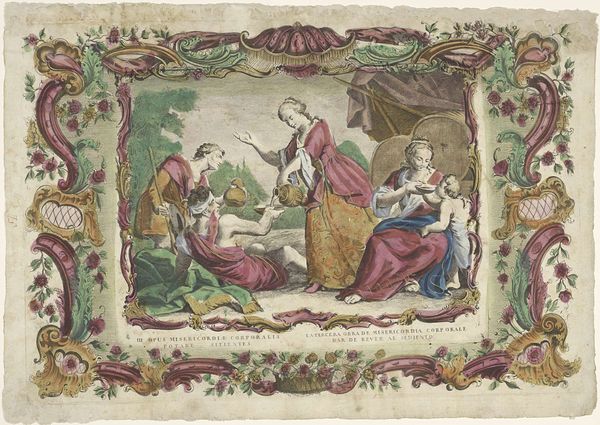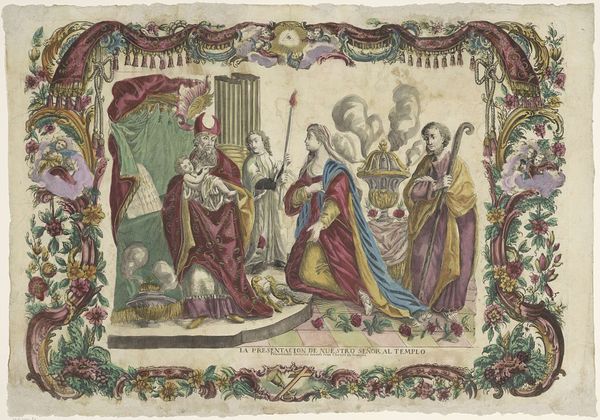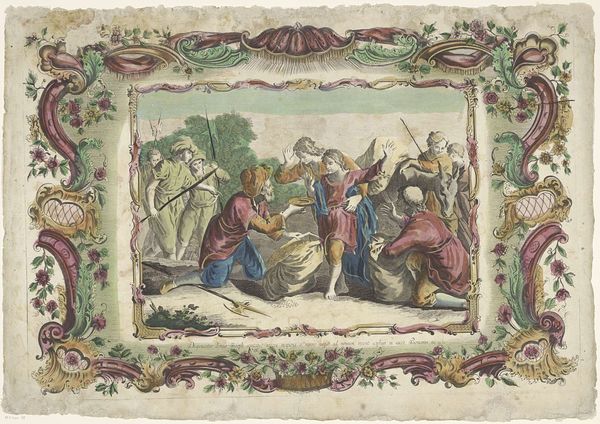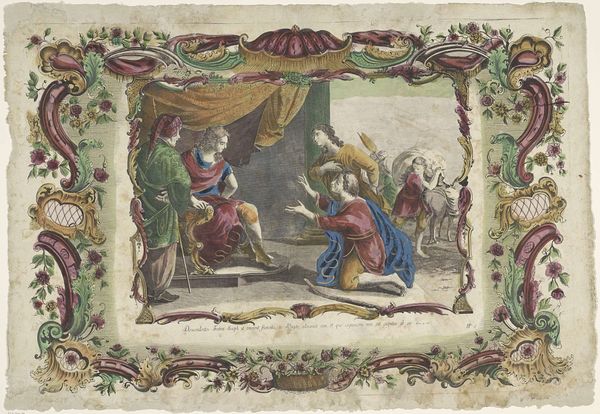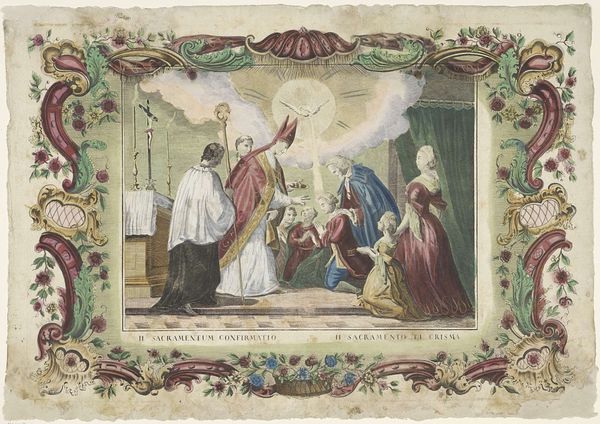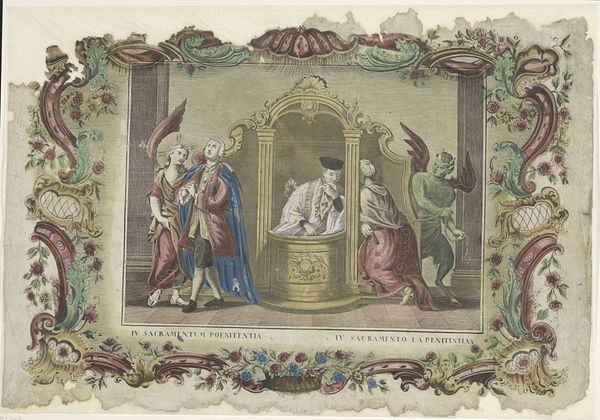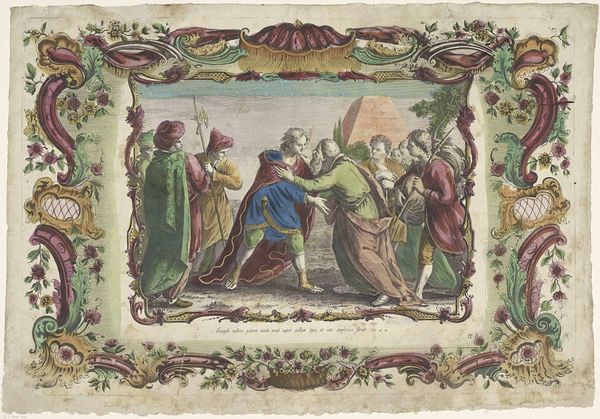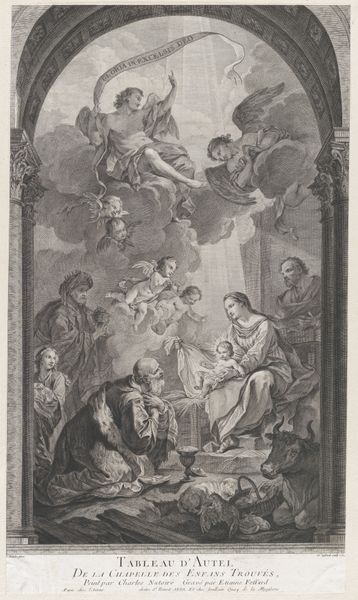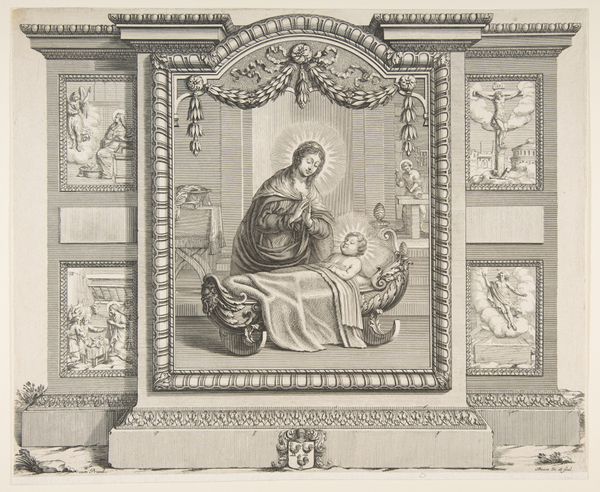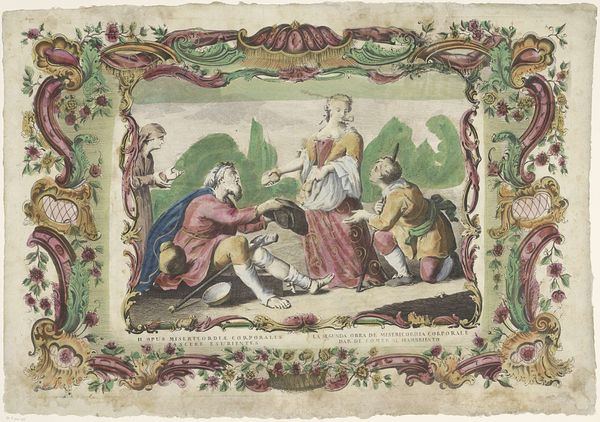
painting, print, ink
#
portrait
#
narrative-art
#
baroque
#
painting
# print
#
figuration
#
ink
#
coloured pencil
#
history-painting
#
academic-art
#
watercolor
Dimensions: height 527 mm, width 770 mm
Copyright: Rijks Museum: Open Domain
Editor: This is "Christus tussen schriftgeleerden in tempel," or "Christ Among the Doctors" made in the 18th century. The Rijksmuseum attributes it to Giovanni Volpato, noting that it is a print with ink and watercolor. The borders almost overwhelm the central image. It seems very ornamental. What strikes you about this piece? Curator: As a print, its means of production speak to wider access to images and stories. Note the material elements, such as ink and watercolor, applied in a way that mimics painting, blurring the lines between the unique artwork and reproducible image. How does the ornamentation reflect the status and consumption of religious imagery at the time? Editor: That's a fascinating point. I hadn't considered how the elaborate border, seemingly decorative, also points to a certain commercial value for religious art. It's interesting how the print mimics a painting. Were these kinds of prints common at that time? Curator: Exactly! Think about the social context. The baroque and academic styles employed here cater to a specific clientele. Were prints primarily destined for private devotion, public display, or educational purposes? Where does the labor reside - in the initial design, or in the repetitive act of printing and coloring? Editor: I suppose a single painting would only reach the wealthy, but prints could circulate much further, offering visual lessons to a broader public. Curator: Precisely. And think about the materials: paper, ink, watercolors—commonplace individually but brought together to disseminate powerful narratives and reinforce social structures. What did this affordability mean for the perception of religious figures? Editor: I see what you mean. Now I’m also thinking about the artisans who produced these, the economics, and its access. It's far more complex than simply a religious scene captured in ink. Curator: Absolutely! Analyzing it this way helps us understand art not just as aesthetic creation but also as a cultural artifact deeply intertwined with its means of production, labor, and circulation.
Comments
No comments
Be the first to comment and join the conversation on the ultimate creative platform.
